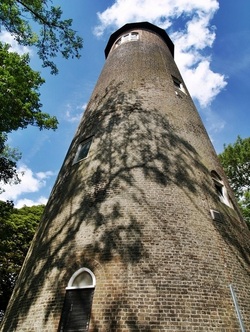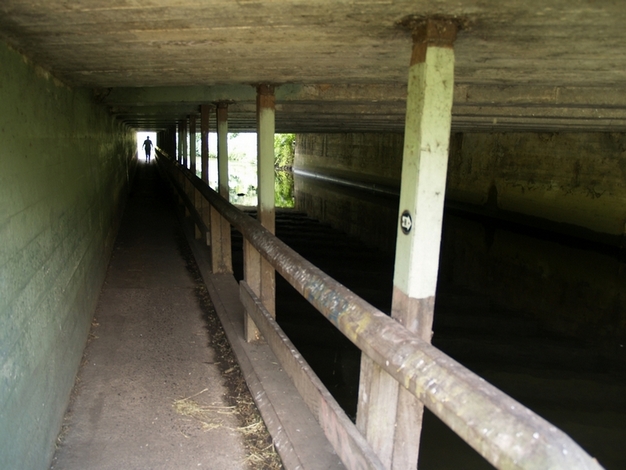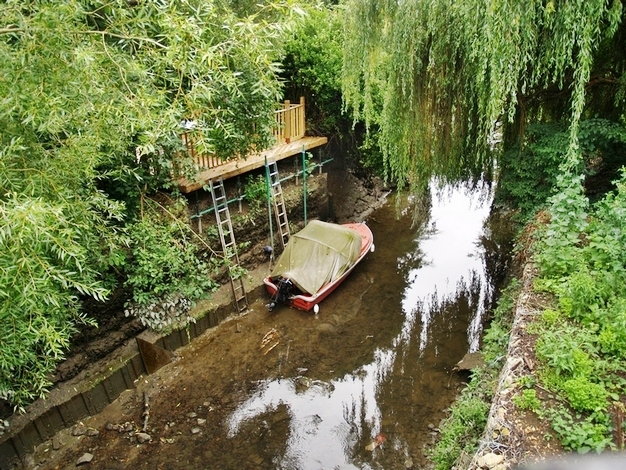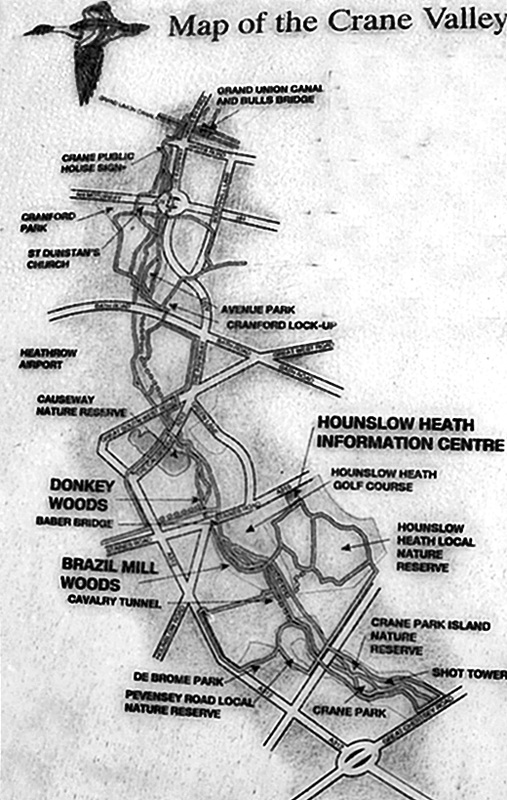London's Lesser Known Rivers - River Crane
The source of the 8 1/2 mile River Crane is a 16-mile stream from Pinner in Middlesex called Yeading Brook and becomes the Crane near the Grand Union Canal in Hayes in the London Borough of Hillingdon. The Crane has also previously been named 'The Fishbourne', 'The Old River', 'The Powder Mill River'
The Crane runs south through Cranford Park, follows the eastern perimeter to Heathrow Airport past Hounslow Heath and curving easterly towards Whitton and Twickenham and then north-east through St Margarets and joining the Thames at Isleworth.
The River Crane creates the boundary between the London boroughs of Hillingdon and Hounslow. Around Hanworth and Whitton, and Isleworth and St. Margarets it also creates a boundary between the London boroughs of Hounslow and Richmond.
The Crane runs south through Cranford Park, follows the eastern perimeter to Heathrow Airport past Hounslow Heath and curving easterly towards Whitton and Twickenham and then north-east through St Margarets and joining the Thames at Isleworth.
The River Crane creates the boundary between the London boroughs of Hillingdon and Hounslow. Around Hanworth and Whitton, and Isleworth and St. Margarets it also creates a boundary between the London boroughs of Hounslow and Richmond.
Walking the River Crane from Hayes:
When extending the Piccadilly Line from Hounslow West to Heathrow Airport, the high water table of the ground beneath the river made it impractical to tunnel under the river, so the line rises from tunnels to cross over it.
Donkey Wood was a hive of industrial activity during the 19th Century. The main activity being the making of gunpowder - the remains of a gunpowder mill can be seen near the junction with the Duke of Northumberland's river. The wood got its name from the donkeys that used to carry materials to and from the Gunpowder Mills
A huge earth mound built by the gunpowder industry can still be seen in the central area of the wood. The mound was built to provide some protection against possible explosions.
A huge earth mound built by the gunpowder industry can still be seen in the central area of the wood. The mound was built to provide some protection against possible explosions.
Following the River Crane from Staines Road, Feltham to the A316 Great Chertsey Road,Whitton
Brazil Mill Woods take their name from a mill which extracted dye in the 18th Century from Brazil wood. It is thought to have been converted into a copper mill later that century. There are also records to show the existence of a flax mill in the same area around 1819 and the gunpowder mills, that continued further south along the river, until 1926. The area was also thought to have produced charcoal due to the abundance of willow and alder trees which favoured the damp river banks.
 The Shot Tower
The Shot Tower
Crane Park was once the site of the Hounslow Gunpowder Mills built in 1766 which were one of the largest gunpowder mills in Europe. Crane Park Island was created to provide a mill pond for the water to drive the machinery. The mills were known as incorporating mills, where the ingredients of gunpowder, sulphur, saltpetre & charcoal were mixed.
There were 55 explosions recorded in the history of the mills, some of them fatal. By 1859, 320 men, women and children were employed at the mills.
The Shot Tower, built in 1823, was used for the production of lead shot - molten lead would be poured through a copper sieve from the top of the tower. As the lead fell it formed small round pellets which cooled & hardened as they hit water in a large tank at the bottom of the tower. However, some theories are that the tower was only used as a watch tower to alert workers to fire hazards and not used for the purposes of lead shot.
Hundreds of barrels of gunpowder were transported by road to a wharf at Isleworth where they were carried by barge to London and beyond. The mills closed in 1926 (along with those further up river). After it ceased to operate for gunpowder manufacture, the subsequent owner sold part of the site for housing and part to Twickenham Council who turned it into a public park, which was opened in 1935. These days the park is a Local Nature Reserve where marsh frogs and the rare water vole breed on the banks of the river.
There were 55 explosions recorded in the history of the mills, some of them fatal. By 1859, 320 men, women and children were employed at the mills.
The Shot Tower, built in 1823, was used for the production of lead shot - molten lead would be poured through a copper sieve from the top of the tower. As the lead fell it formed small round pellets which cooled & hardened as they hit water in a large tank at the bottom of the tower. However, some theories are that the tower was only used as a watch tower to alert workers to fire hazards and not used for the purposes of lead shot.
Hundreds of barrels of gunpowder were transported by road to a wharf at Isleworth where they were carried by barge to London and beyond. The mills closed in 1926 (along with those further up river). After it ceased to operate for gunpowder manufacture, the subsequent owner sold part of the site for housing and part to Twickenham Council who turned it into a public park, which was opened in 1935. These days the park is a Local Nature Reserve where marsh frogs and the rare water vole breed on the banks of the river.
From the A316 Great Chertsey Road, Whitton down to the River Thames at Isleworth:

Dan Foxwell writes to this website after seeing the River Crane page:
"In the late 1940s a young teenager named Ken Colyer, who lived in Cranford almost opposite the White Hart Pub (sadly demolished), formed the Crane River Jazz Band. They would practice close to the river bank so as not to annoy the neighbours! Ken Colyer went on to be a big name in Trad Jazz circles. There cannot be many London rivers honoured in this fashion."
Kenneth Colyer (1928- 1988) was a trumpeter and cornetist, devoted to New Orleans jazz. The band played at the Royal Festival Hall on 14 July 1951 in the presence of HRH Princess Elizabeth. There is now also an unconnected band called the Crane River Cajuns who occasionally play the local area.

































